
Autism and Sound Sensitivity
Navigating the Silent Struggles of Autistic Sensory Processing
Understanding Sound Sensitivity in Autism
Sound sensitivity is a prevalent and often challenging aspect of autism spectrum disorder (ASD). Characterized by heightened discomfort or distress in response to typical sounds, this phenomenon can significantly impact daily living, emotional well-being, and social participation. While common in many autistic individuals, the underlying mechanisms, manifestations, and strategies for management require careful exploration to foster understanding, accommodation, and effective support.
The Nature of Sound Sensitivity in Autism
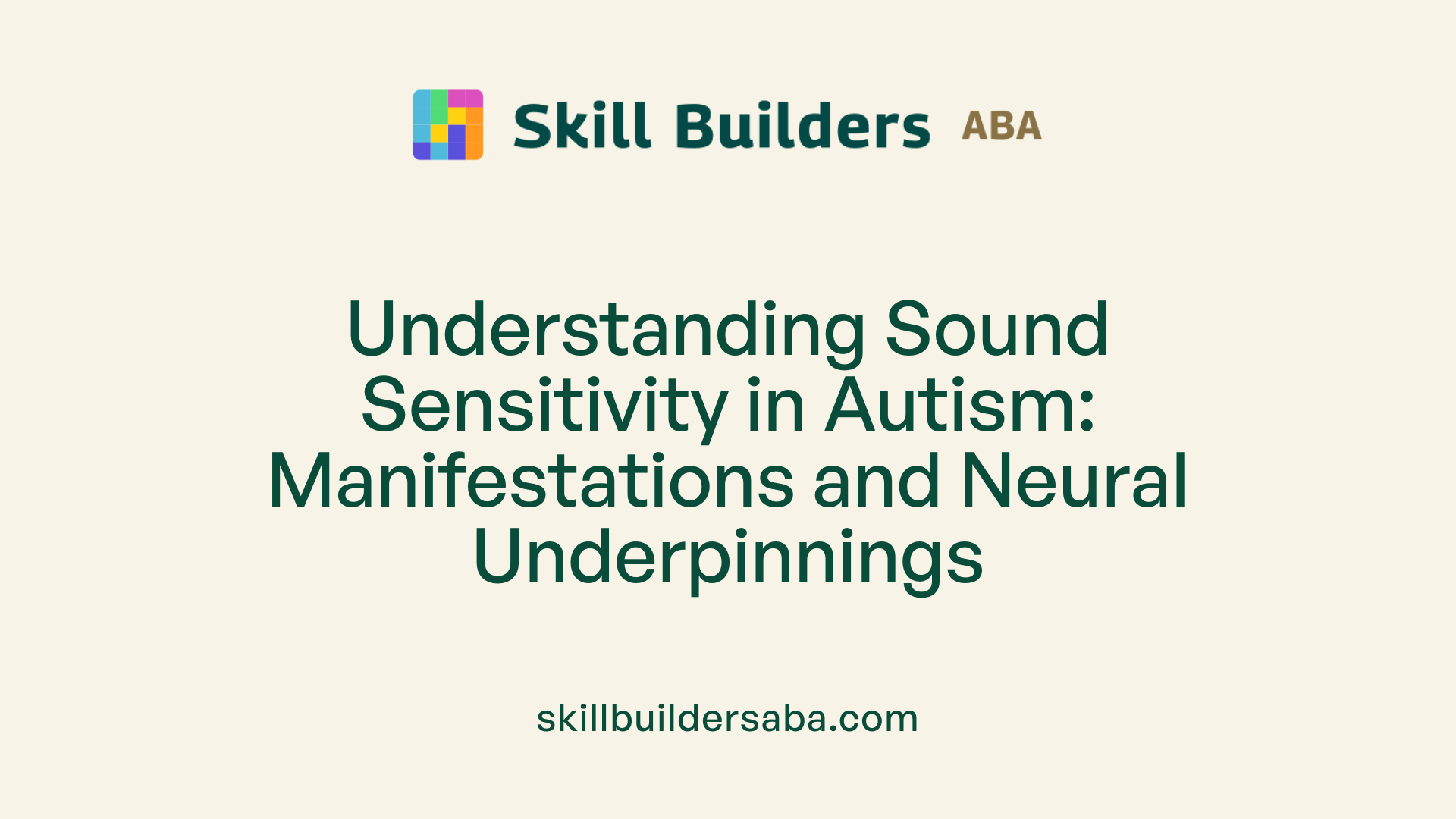
What is sound sensitivity in autism and how does it manifest?
Sound sensitivity in autism, also referred to as hyperacusis, is a prevalent sensory processing trait where individuals experience exaggerated discomfort or distress from certain sounds. This heightened sensitivity leads to noticeable reactions such as covering the ears, trying to block out noise, or leaving noisy settings to seek relief. Some autistic individuals might also exhibit behavioral responses like meltdowns or withdrawal triggered by loud or specific sounds.
Research shows that approximately 50 to 70 percent of autistic people experience difficulties with everyday sounds, which can significantly impact their daily lives. For example, common noises from machines, traffic, or crowded places can feel overwhelming. These reactions are linked to differences in how the autistic brain processes auditory information.
Neurophysiological studies provide insight into this phenomenon. They indicate that individuals with autism often have increased activity in brain regions involved in sensory perception and emotional regulation, such as the amygdala and sensory cortices. This neural hypersensitivity can cause sounds to seem more intense or painful, contributing to discomfort and anxiety.
Managing sound sensitivities involves various strategies, including environmental modifications like creating quiet spaces and reducing background noise. The use of sensory tools such as noise-canceling headphones and earplugs can provide relief, while therapeutic approaches like occupational therapy aim to improve coping skills. Recognizing and accommodating these sensitivities is crucial for supporting autistic individuals in navigating their environments more comfortably.
Signs and Symptoms of Sound Sensitivity
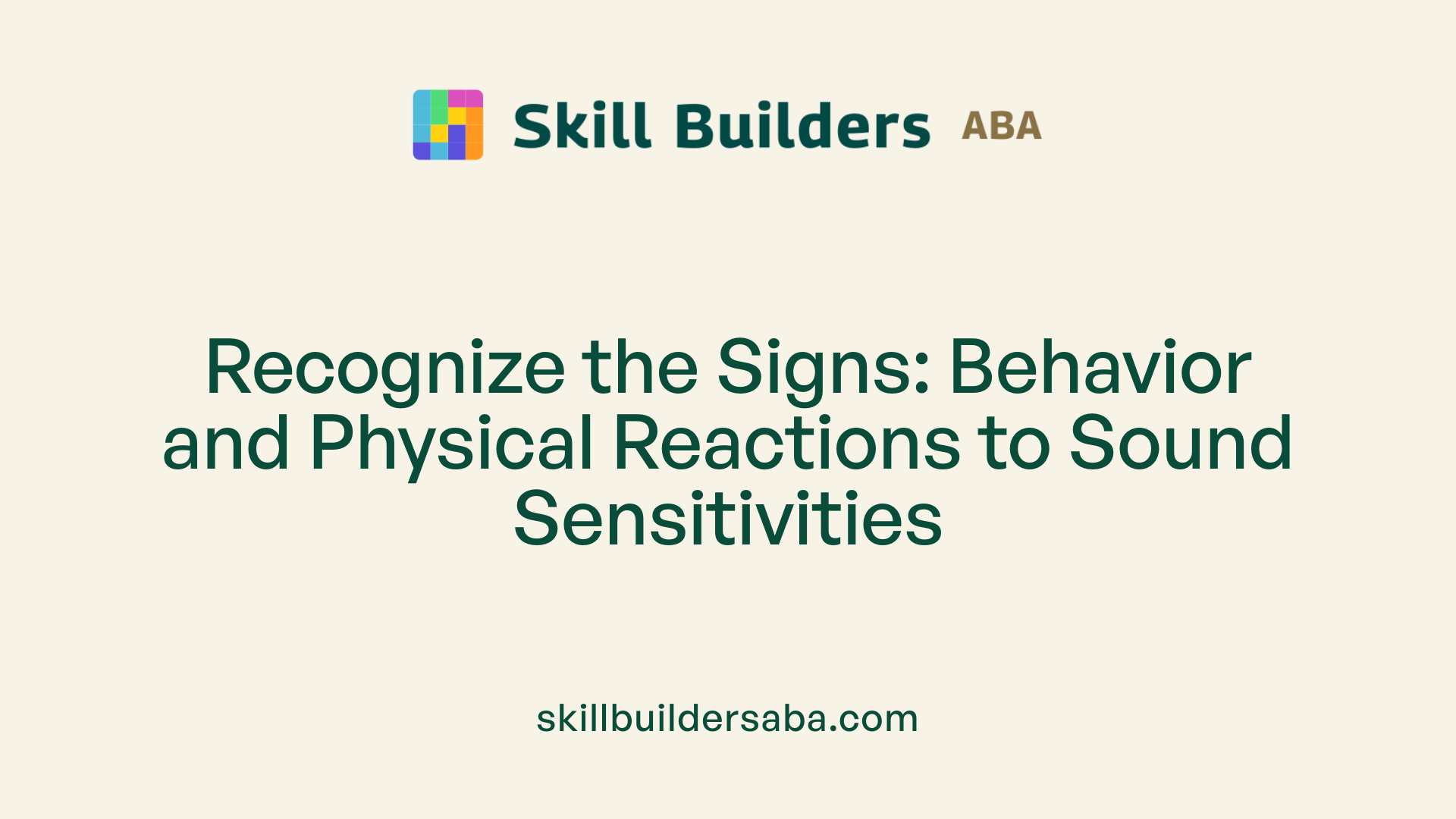
What are common signs and symptoms of sound sensitivity in autistic individuals?
Autistic individuals often display several behaviors indicating discomfort or distress caused by sound sensitivity. One of the most recognizable signs is covering or shielding their ears to block out loud or sudden noises. They might also attempt to avoid noisy environments altogether, seeking quieter spaces to feel safer. Expressing discomfort explicitly, such as through whining, crying, or complaining about sounds, is common.
Behaviorally, many respond with agitation, restlessness, or meltdowns when exposed to certain sounds, particularly those perceived as overwhelming or intrusive. Some individuals may become uncharacteristically irritable or refuse to engage in activities involving noise. Conversely, some might under-respond or seek louder stimuli, displaying a fascination with or attraction to loud or repetitive sounds.
Physical reactions often accompany these behaviors. These can include increased heart rate, sweating, or trembling during exposure to bothersome sounds. Emotionally, the listener might exhibit signs of anxiety, frustration, or emotional shutdown.
These symptoms significantly affect daily routines, playing a role in social interactions and participation in community activities. Children and adults with undervalued or unrecognized sensitivities may withdraw from social settings or lose focus in busy environments.
Fortunately, various strategies can aid in recognizing and managing sound sensitivity. Using noise-canceling headphones, creating designated quiet zones, and gradually introducing new sounds through desensitization are effective approaches. Sensory-friendly environments and clear communication about upcoming noise can also help individuals cope better.
Being aware of these signs and responding supportively is vital for improving the comfort and well-being of autistic people dealing with auditory sensitivities.
Understanding Decreased Sound Tolerance: Hyperacusis, Misophonia, and Phonophobia
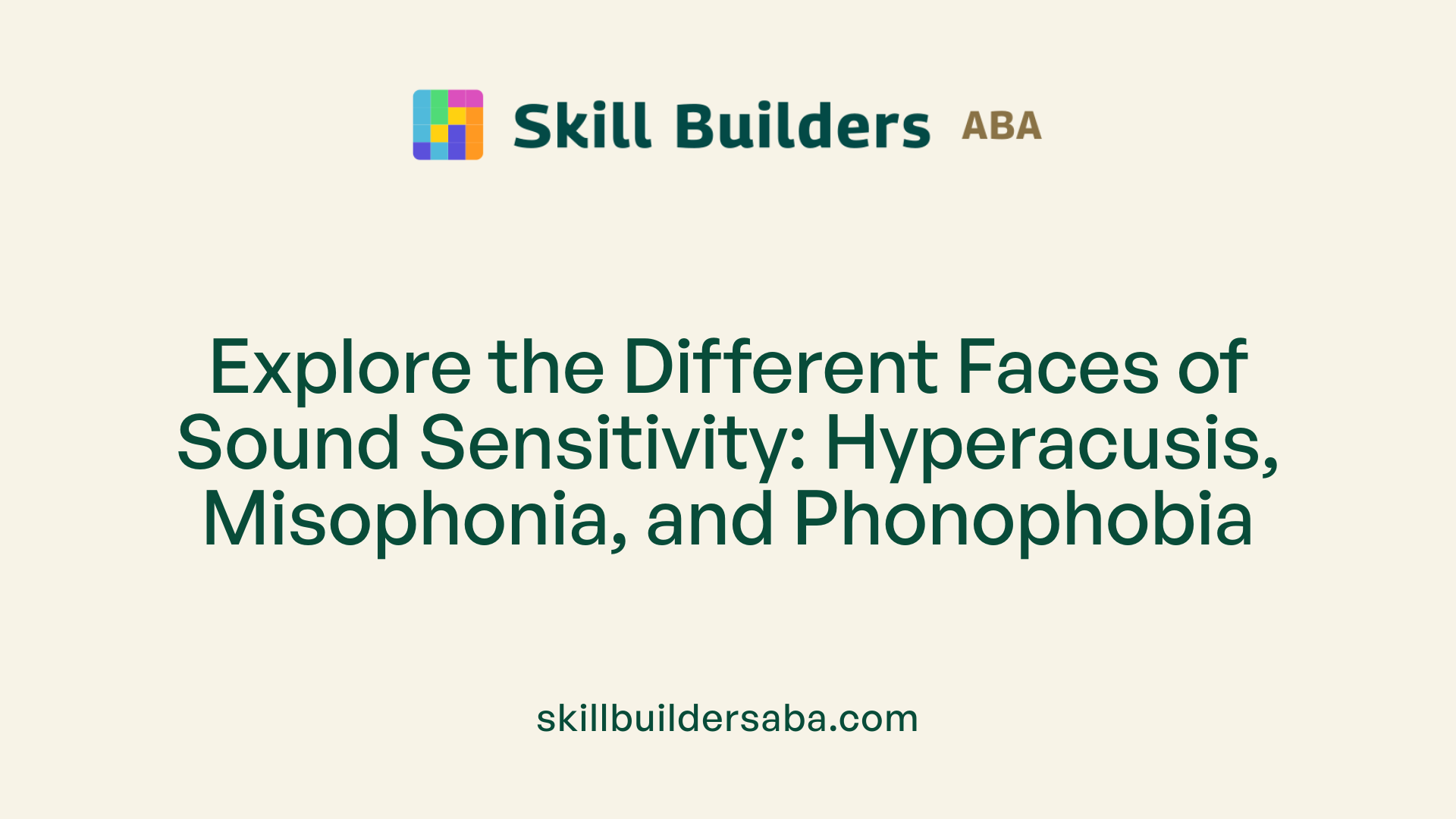
What are the different types of decreased sound tolerance like hyperacusis, misophonia, and phonophobia?
Decreased sound tolerance in autism manifests in several distinct ways, including hyperacusis, misophonia, and phonophobia.
Hyperacusis involves an increased sensitivity to sounds of moderate intensity. Individuals with hyperacusis often perceive these sounds as excessively loud or even painful, which can cause physical discomfort and distress.
Misophonia is characterized by an intense emotional and autonomic response to specific trigger sounds, such as chewing, tapping, or lip-smacking. These sounds often provoke feelings of anger or disgust and can lead to avoidance behaviors.
Phonophobia is a form of sound-related anxiety or fear. People experiencing phonophobia tend to anticipate adverse reactions to certain sounds, leading to avoidance and heightened anxiety, aligning with mechanisms seen in specific phobias.
Each of these conditions impacts daily functioning, social participation, and emotional well-being, especially in individuals with autism. Because they stem from different neural mechanisms, management strategies need to be tailored accordingly.
Neural pathways involved in decreased sound tolerance
Research suggests that hyperacusis in autism may be linked to an increased gain in the central auditory pathway, possibly due to abnormalities in neural excitability or an imbalance between excitation and inhibition in the brain.
Misophonia appears to involve hyperactivation of salience networks—regions responsible for detecting and responding to important stimuli—such as the anterior insula. This causes specific sounds to become excessively salient or emotionally charged.
Phonophobia may result from learned fear responses, with neural circuits involving the amygdala and prefrontal cortex becoming hyperactive during sound exposure. A heightened fear response combined with poor extinction can make individuals extremely avoidant of particular sounds.
Impact on individuals with autism
In autism, these sensory sensitivities often lead to increased distress, sensory overload, and emotional responses like meltdowns or withdrawal. The over-responsiveness can make everyday social settings challenging, impairing communication and participation.
For some, sounds that are normally tolerable may become intolerable, affecting their participation at school, work, and social activities. The discomfort can also exacerbate anxiety, leading to a cycle of increasing avoidance.
Management considerations
Managing decreased sound tolerance involves a combination of strategies. Environmental modifications—such as using soundproofing, earplugs, or noise-canceling headphones—can help reduce discomfort.
Gradual desensitization and cognitive-behavioral therapy may assist individuals in developing coping skills and reducing anxiety associated with sound triggers.
In addition, educating families and caregivers about different types of sound sensitivities helps create supportive environments. Professional interventions, including audiology assessments and counseling from occupational therapists, remain essential.
Recognizing the specific type of decreased sound tolerance is crucial for designing effective, personalized management plans that enable better social participation and quality of life for autistic individuals.
Causes and Neural Underpinnings of Sound Sensitivity
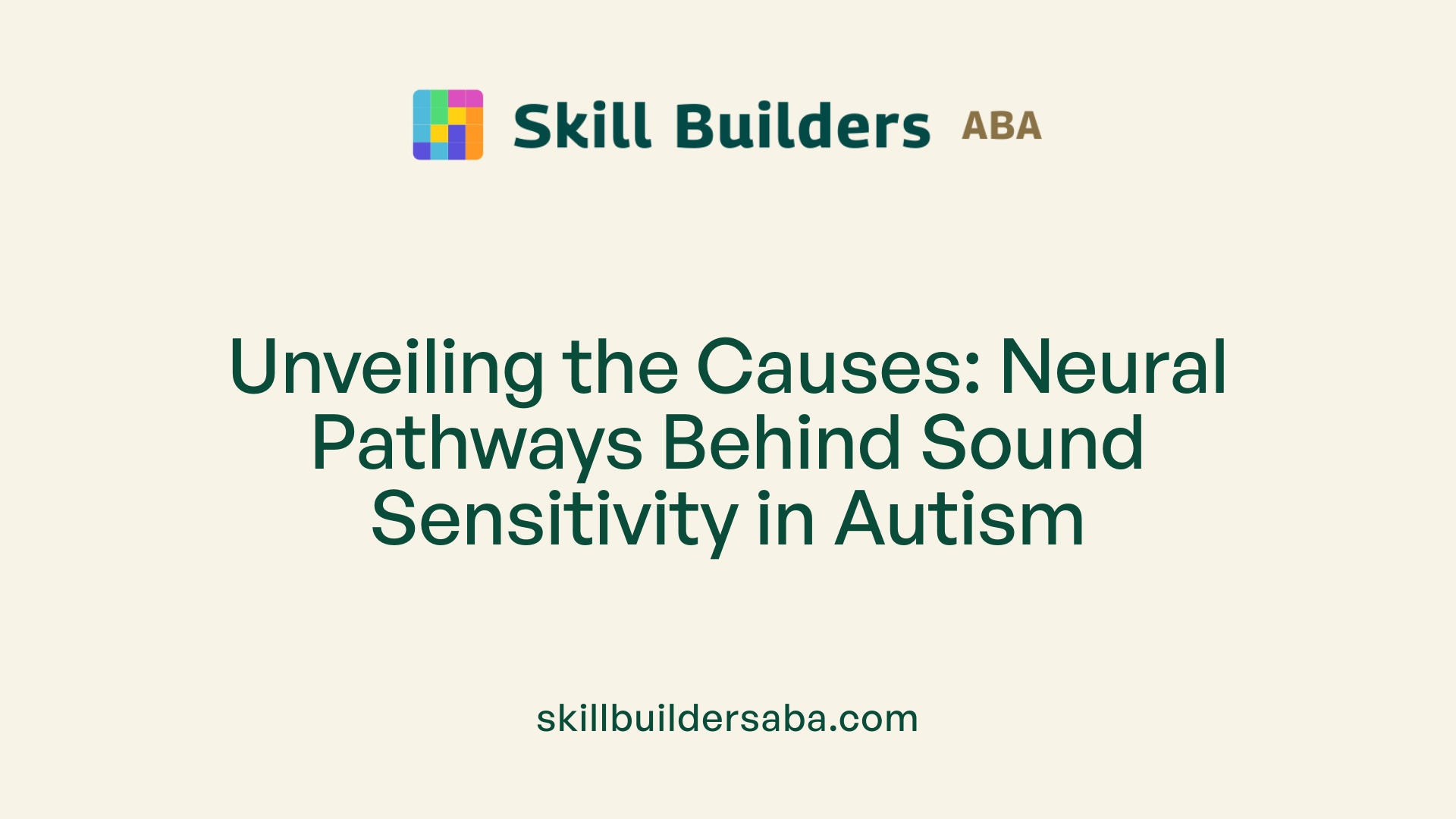
What are some causes or contributing factors to sound sensitivity in autism?
Sound sensitivity in autism arises from differences in how the autistic brain processes sensory information. Many individuals on the spectrum experience hyperresponsiveness, where normal sounds seem excessively loud, painful, or overwhelming. This heightened reaction is often linked to atypical neural activity in specific brain regions involved in sensory processing and emotional regulation.
Research indicates increased activity in areas such as the amygdala, which plays a significant role in processing fear and emotional responses, and the sensory cortices, responsible for interpreting auditory stimuli. This hyperactivation can cause sounds to be perceived as more intense or distressing than they are for neurotypical individuals.
Furthermore, altered neural pathways contribute to these sensitivities. Enhanced central gain, a concept referring to increased amplification of neural signals in auditory pathways, may cause sounds to feel disproportionately loud or intolerable. This mechanism is thought to result from neural pathway abnormalities or imbalances in excitatory and inhibitory signals within the brain.
Conditions like hyperacusis (over-sensitivity to moderate sounds), misophonia (aversion to specific sounds), and phonophobia (fear of sounds) are manifestations of these neural differences. These phenomena often involve hyperactivation of the salience network, which flags certain stimuli as particularly noteworthy or threatening, thereby increasing sensitivity.
Environmental factors, such as noisy settings or unfamiliar environments, can exacerbate these neural sensitivities. Additionally, individual differences—such as genetic predispositions or the presence of co-occurring sensory processing disorder—also influence the degree of sound sensitivity.
Overall, the convergence of these neural and environmental factors results in a heightened alert system that can cause sensory overload, leading to distress, anxiety, and avoidance behaviors among autistic individuals.
Therapeutic and Management Strategies
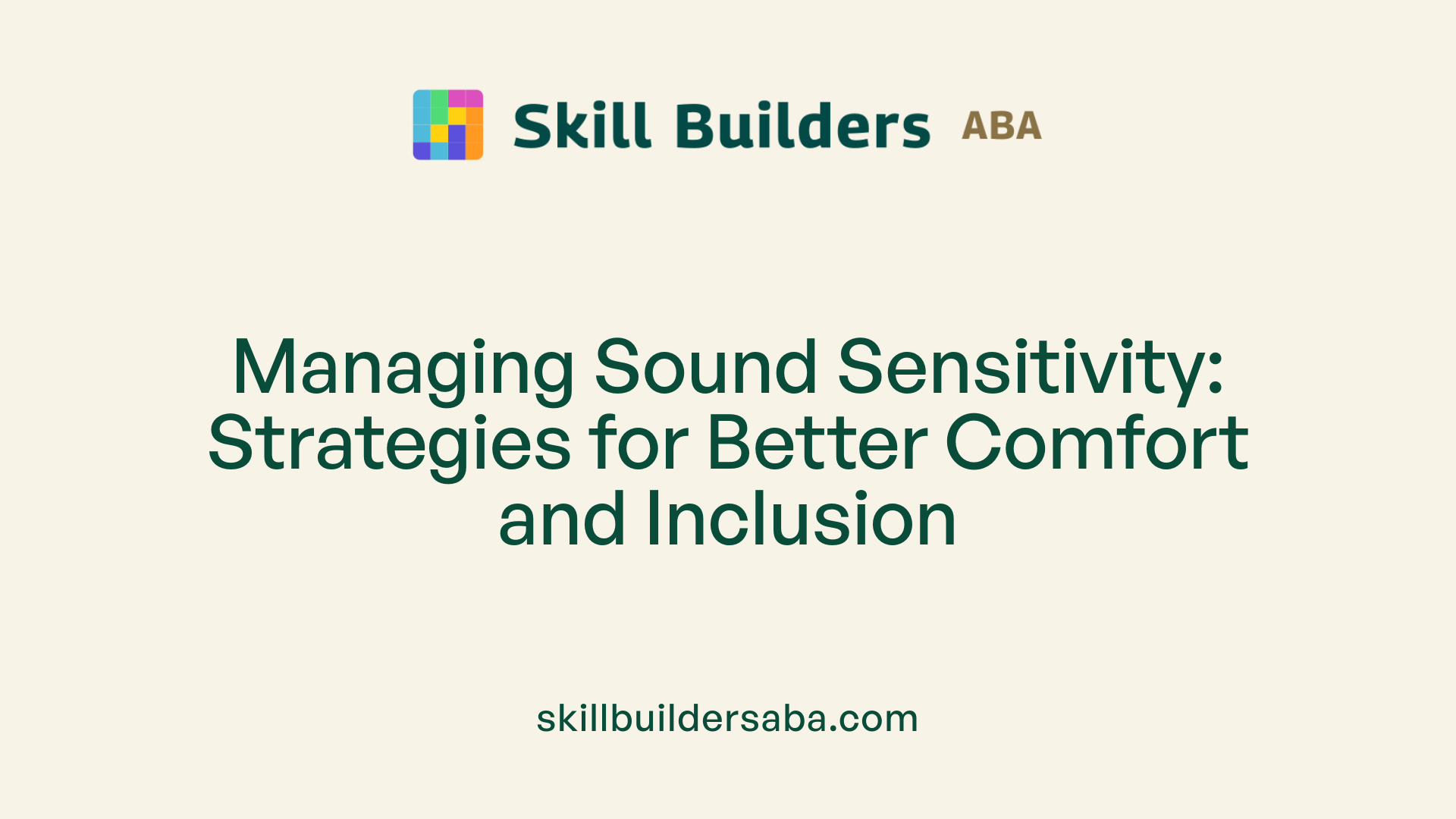
What therapeutic strategies and management approaches are effective for addressing sound sensitivity in autism?
Managing sound sensitivity in individuals with autism requires a multidimensional approach tailored to their specific needs. One effective strategy involves sensory-based therapies that aim to help individuals better process and tolerate sounds. Occupational therapy often includes sensory integration techniques, which gradually introduce sensory stimuli in a controlled, calming manner to reduce over-responsiveness.
Auditory retraining methods, such as Tinnitus Retraining Therapy (TRT), can also be beneficial. These therapies focus on desensitizing the auditory system to specific sounds, reducing their perceived loudness and emotional impact. In addition to therapies, environmental modifications are crucial. Creating sensory-friendly spaces with soundproofing, using noise-canceling headphones or earplugs, and scheduling quiet times during activities can directly lessen overload.
Gradual desensitization techniques are particularly helpful. These methods involve slowly exposing individuals to noise sources in a controlled setting, helping them build tolerance over time. This process can be supervised by a trained professional to ensure comfort and safety.
Behavioral strategies like cognitive-behavioral therapy (CBT) are also valuable. CBT can address associated anxiety and phobias related to sound sensitivities, helping individuals develop coping skills and reduce distress.
It's important to involve audiologists, who can assess the nature of sound sensitivities and recommend specific interventions or hearing protection options. Combining sensory integration, behavioral therapy, and environmental accommodations can significantly improve the quality of life for autistic individuals experiencing noise sensitivities.
In summary:
- Sensory integration therapy and auditory retraining
- Creating sensory-friendly environments
- Use of noise-canceling devices
- Gradual exposure and desensitization
- Cognitive-behavioral therapy for anxiety
- Professional assessments for tailored intervention
Supporting Caregivers and Building Skills
How can caregivers and individuals access resources and education to cope with sound sensitivities?
Caregivers and autistic individuals can find valuable support through various channels. Occupational therapists play a crucial role by helping develop personalized sensory coping mechanisms and teaching sensory processing skills. These professionals can recommend specific interventions and tools to manage sound sensitivities effectively.
Educational materials, such as books, brochures, and online resources, offer practical advice on understanding sensory sensitivities and implementing strategies at home, school, or in the community. Joining support groups and online communities provides emotional support, shared experiences, and tips from others facing similar challenges.
Therapeutic approaches like auditory integration therapy, cognitive-behavioral therapy (CBT), and speech or music therapy are often utilized to help improve sound processing and reduce sensitivities. These therapies aim to help individuals tolerate sounds better and communicate their needs.
Creating a sensory-friendly environment is an important strategy. Use of noise-canceling headphones, establishing quiet zones, and environmental modifications such as soundproofing can significantly reduce distress caused by loud or overwhelming sounds.
Building self-advocacy skills is equally essential. Encouraging individuals to express their sensory needs and working with professionals enables them to implement effective coping strategies and participate more comfortably in social settings. Collectively, these resources and approaches empower both caregivers and individuals to navigate sound sensitivities with greater confidence and resilience.
The Impact of Sound Sensitivity on Daily Life and Well-Being
What impact does sound sensitivity have on the daily life and behavior of autistic individuals?
Sound sensitivity, or hyperacusis, profoundly affects the daily routines and behaviors of autistic people. Many experience discomfort, distress, and sensory overload when exposed to common noises such as loud conversations, traffic, or household sounds. This heightened response often leads to avoidance of noisy environments, including crowded places or social gatherings. As a result, individuals may withdraw from social activities, impacting their social participation and independence.
Emotionally, heightened sound sensitivity can trigger feelings of anxiety, irritability, or agitation. These reactions sometimes escalate into meltdowns or shutdowns, especially when coping mechanisms are insufficient or unavailable. Safety concerns may also arise, as sudden loud sounds can startle or scare autistic individuals, increasing the risk of accidents.
To manage these challenges, many develop personalized strategies like wearing noise-canceling headphones, creating quiet spaces at home and school, or planning visits to public places during less busy hours. Despite these efforts, the ongoing impact of sound sensitivities can still diminish quality of life, making social engagement and everyday activities more difficult.
Addressing these issues requires a combination of environmental adjustments, therapy, and support systems. Tailored interventions and accommodations help autistic individuals navigate their environments more comfortably, fostering greater independence and emotional well-being.
Fostering Understanding and Support
Recognizing and accommodating sound sensitivities in autism is essential for promoting well-being, independence, and active participation in daily life. Through informed management strategies, personalized interventions, and supportive environments, autistic individuals can better navigate their sensory world. Continued research and education are vital to develop more effective therapies and to heighten awareness among caregivers, educators, and the community, ultimately creating a more inclusive and understanding society.
References
- What Do We Know About Noise Sensitivity In Autism?
- Autism and Sound Sensitivity: Why it Happens and Coping Tips
- Sensory issues - Autism Speaks
- A Review of Decreased Sound Tolerance in Autism - PubMed Central
- What Do We Know About Noise Sensitivity in Autism?
- Autism and Sound Sensitivity: Everything You Need to Know
- Sensory differences - a guide for all audiences
- Autism and Sound Sensitivity: Everything You Need to Know
- Sensory differences - a guide for all audiences
- Noise Control: 11 Tips for Helping a Child With Autism
Reach Out Today
Learn more about how we can support your child’s growth and development. Contact us to discuss our services and availability in your area.
.svg)